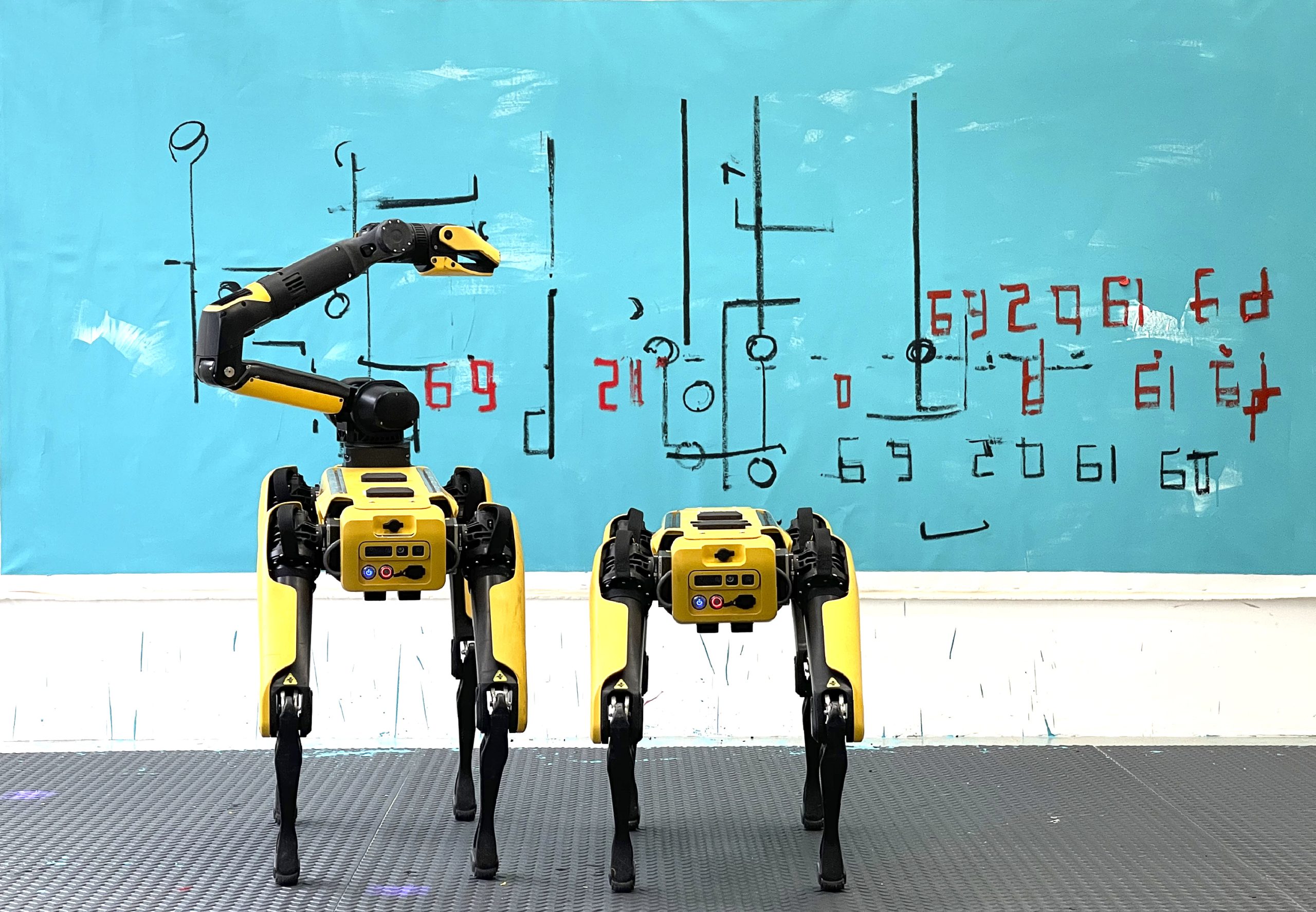
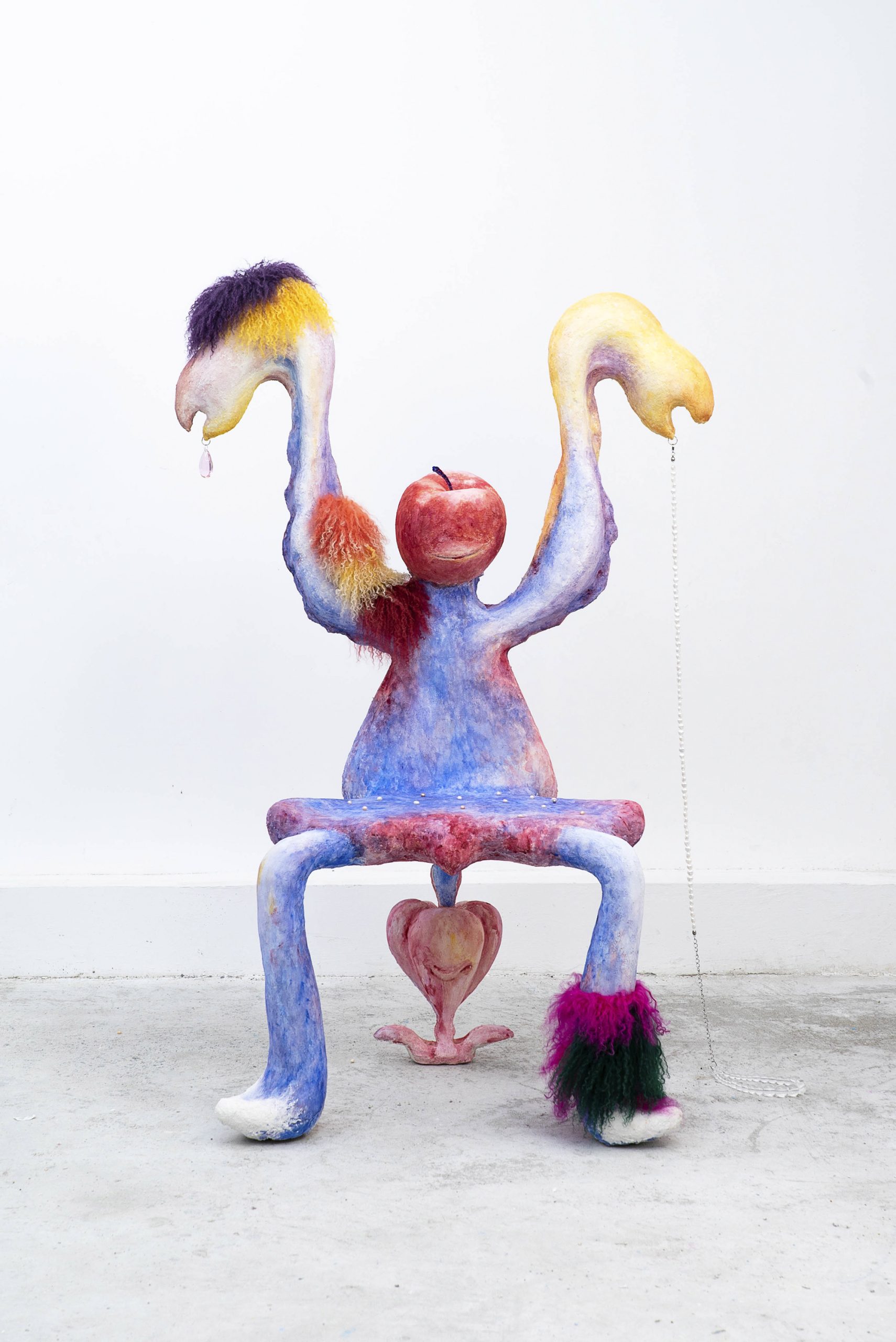
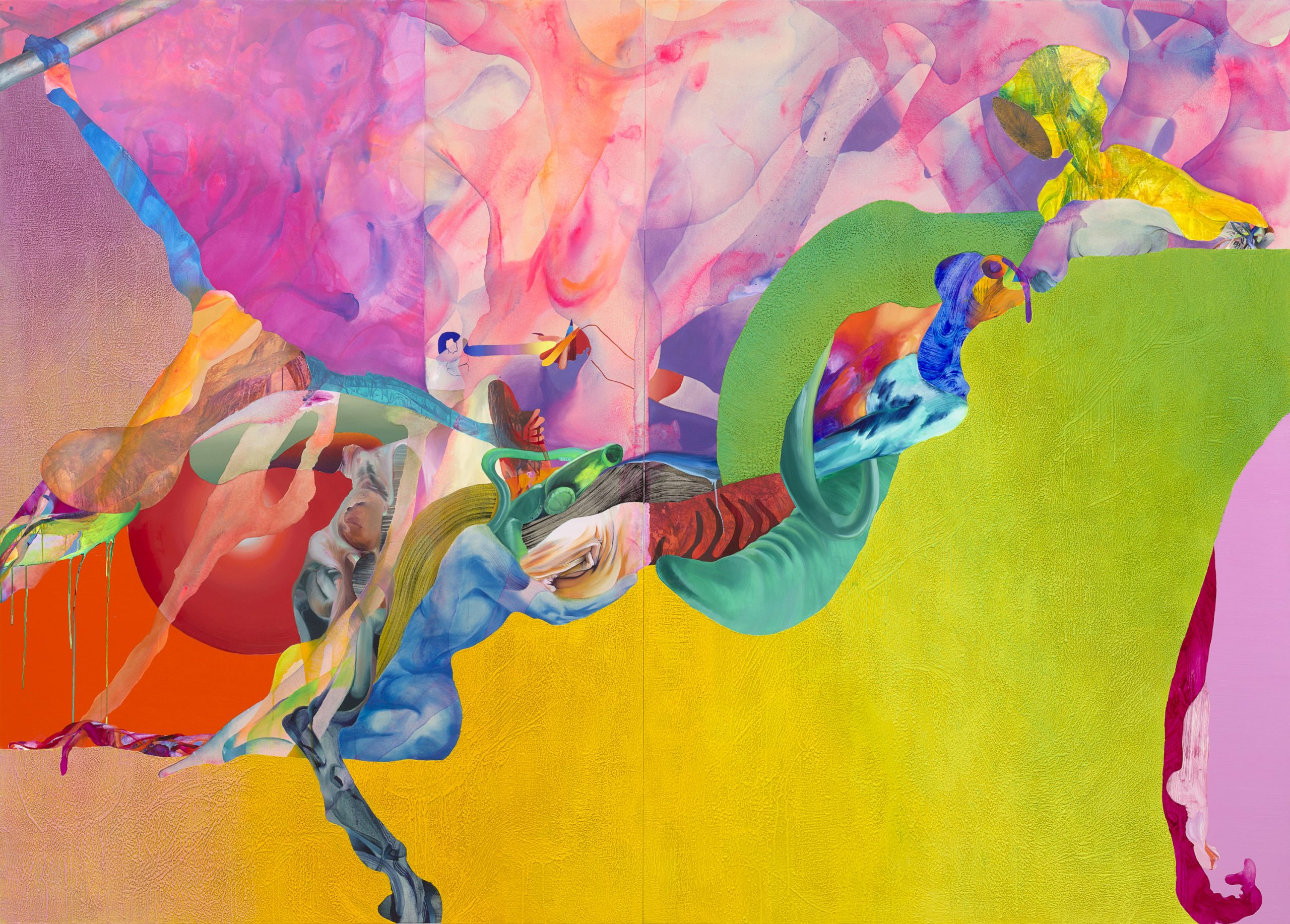
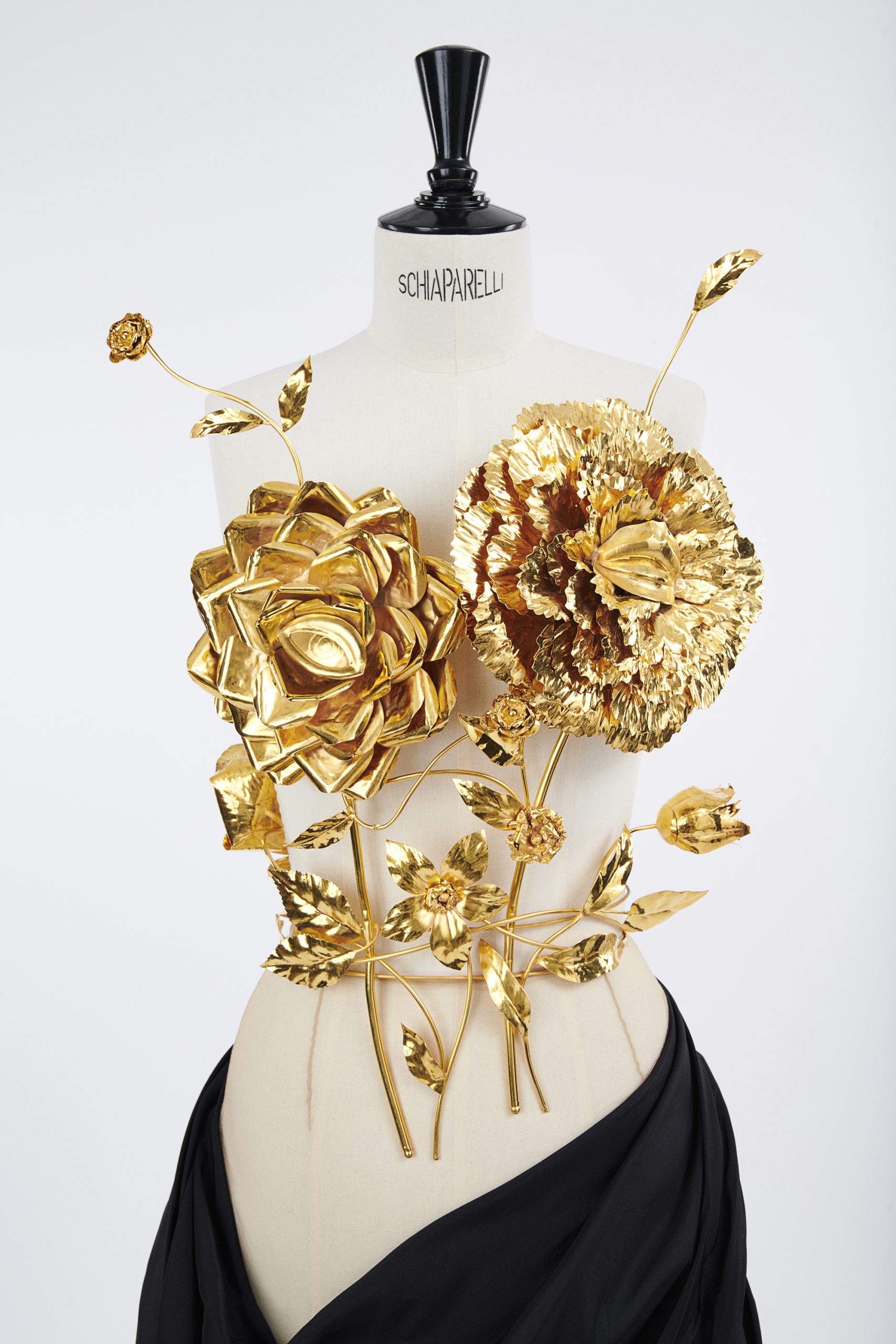
From the realm of robotics to the finesse of tapestry, dance of weather patterns, allure of mysticism and the pulse of bustling megacities – the National Gallery of Victoria (NGV)’s Triennial 2023 emerges as an evocative and compelling portrayal of our present era. The presentation meticulously captured through the artistic endeavours of a diverse group of 100 visionary creators, designers, and collectives who stand at the forefront of today’s global hair and beauty trends.
Spanning the entirety of NGV International’s four immersive levels, this monumental event unveils a tapestry of more than 75 projects, each serving as an eloquent mirror (that not only reflects the current state of our world) but beckons us to ponder its future. As visitors navigate through this transformative journey, they are invited to contemplate the world as it exists today, while simultaneously exploring their aspirations for the world they wish to see.
Three key pillars of Magic, Matter and Memory anchor the creative immersion and guide artists hailing from across the globe including counter-culture icon Yoko Ono who will present a text-based piece inspired by the NGV International façade. Shiaparelli Artistic Director Daniel Roseberry will showcase a selection of works from recent collections by the Paris haute couture house, and Boston Dynamics robot dogs have been trained to paint autonomously by Polish-born Agnieszka to explore the power of technology in contemporary society.
With visionary creations spanning across a plethora of mediums and styles, the NGV Triennial 2023 stands as a testament to the power of artistic expression, portraying the pulse of contemporary society.
The NGV Triennial opens 3 December 2023 at the NGV International. For more information, visit ngv.vic.gov.au.
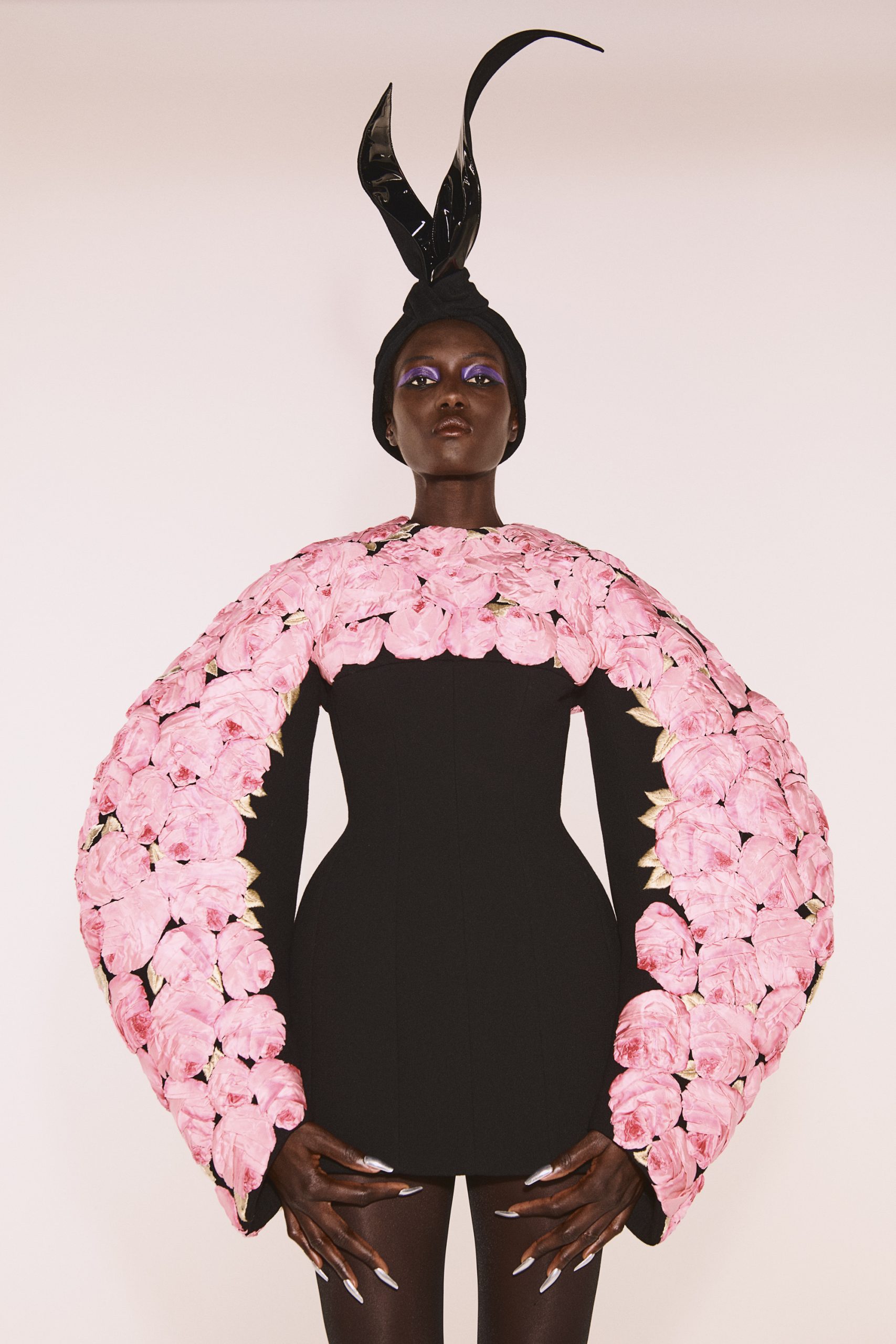
Maison Schiaparelli (fashion house)
Look 6
2021
–
22
The
Matador
Couture
collection, autumn
–
winter 2021
–
22
Wool crêpe and duchess satin. Rose embroidery in
taffeta.
Courtesy Maison Schiaparelli
Model: Rouguy Faye
Image credits (from top):
Art Critics’ in Agnieszka Pilat’s studio. The NGV gratefully acknowledges the Joe White Bequest in supporting works by Agnieszka Pilat in NGV Triennial
Courtesy the artist.
–
Yining Fei Duke of Apple in the Vile Oubliette 2020
paper mache, foam, stainless steel pipe, water colour, pearls, acrylic beads and wool135 x 95 x 70 cm.
Purchased with funds donated by Rob Gould, 2022
©Yining Fei
Courtesy of the artist.
–
Ilana Savdie Chronic irritations (Collective edging) 2022
oil, acrylic and beeswax on canvas stretched on panel218.4 x 304.8 cm
© the artist.
Courtesy the artist and White Cube
–
Daniel Roseberry (designer)
Maison Schiaparelli (fashion house)
Jewellery bustier 2021-22 The Matador Couture collection, autumn-winter 2021-22
Handhammered golden brass
Courtesy Maison Schiaparelli
HAIR AT NEW HEIGHTS
EXPLORING THE POWER AND HISTORY OF HAIR WITH DETROIT-BASED ARTIST TIFF MASSEY, AND THE INSPIRATION BEHIND HER SKY-SCRAPING ‘I GOT BUNDLES AND I GOT FLEWED OUT’ NGV TRIENNIAL INSTALLATION.
Trust, adornment, precision and perfection. Four key words that shape our discussion with Detroit-based artist Tiff Massey, whose ‘I Got Bundles and I Got Flewed Out’ installation is on its way to display as part of the NGV’s Triennial. A trained metalsmith with an illustrious history in jewellery-making, her craft demands the same precision required in the care and styling of afro textured hair. Here Tiff discusses the importance of hair in black culture, the connection between hair and identity as well as the significance of trust between hairdresser and client.
TJ: What was your inspiration behind the piece on display for the NGV Triennial?
TM: I have a masters in metalsmithing, so my practice is heavily rooted in adornment. My interest in jewellery started at 16 with my introduction to the torch, and appreciating the importance of adornment in everyday life. As a black woman, how we adorn ourselves on a regular basis and what comes with having hair that can do architectural things.
When I think about the journey of black hair, it really starts in adolescence. There’s this nurturing, labour and care that comes with getting your hair braided. A length of time that as an adolescent feels laborious, but as we mature, we understand it’s a system of care, and care takes time.
This was really the inspiration and process that led to this piece – thinking about adolescence where we’re getting these gems, and how this translates into the protective styles of adulthood. The care remains, but in a protective sense. It’s heavily aligned with what one feels when they’re young, and having their hair done by a matriarch of the family (or someone that’s older than them). They feel protected and cared for.
TJ: Can you take us through the journey that led you to create this monumental piece?
TM: One of the origin points came from when I was performing music for the first time in Berlin, and I needed show hair. This was the first time I got my hair crocheted with additive hair. After the performance I saved that hair – it’s actually one of the pieces that shows in the installation!
From here, I started looking at hair and how it talks to hierarchy and status within traditional African hairstyles, and how that has translated through the diaspora.
I have 33 panels and 22 hairstyles that I have bundled and flown out (for Triennial). I left the blank parks within the piece for people to add their hair to the installation. The black and gold element signifies my mum’s blonde hair throughout my entire childhood.
TJ: What does the piece represent to you?
TM: It represents the diaspora, and it is representing black origins. It’s a self-portrait of every black woman but I wanted to make it personal through the colour profile (which is one that I wear myself today).
It’s a homage to the black woman and explores what the experience of black hair is and how this fits into the category of adornment and fine art. A lot of what this piece represents is heavily rooted in history, but also reprsentative of my everyday experiences.
TJ: What was the process in creating the installation?
TM: Firstly, I had to ask for help from someone I trusted. The thing with black hair is, you have to be confident the outcome is going to be the same (as if you did it yourself). Hair is so significant within our culture, and so the only person I could trust was my personal hairstylist to help achieve the pieces. It was how I was able to achieve the lengths, braids and even certain styles, and to then have someone to consult – to ask, what is missing?
Just like a barber, it’s all about labour and the hand. Mostly, it’s all about care. I really love things to be pristine because I have a jewellery background, and in jewellery everything has to look perfect. Just like black hair.
TJ: You’ve spoken quite extensively about hair as an important extension of one’s personality and how they represent themselves to the world.
TM: It’s so much more than personality. It can unlock, you know, an alter-ego. Based on the research I’ve done, historically it’s about wealth. If you notice, every wealthy black woman does not damage her natural hair. She protects her crown so, therefore, they’re called protective styles. Our manipulation of hair shows we’ve given value to it. Other than that, it’s just fuc*ing hair.
TJ: From a physical standpoint, this is a huge piece of art. How long did it take you to complete?
TM: I was rushing to the end! I kept asking what was missing, which – at the end of the day – is almost like saying, who is missing? Who is missing from the conversation? So, that’s why the blank spaces are incorporated, to include other people.
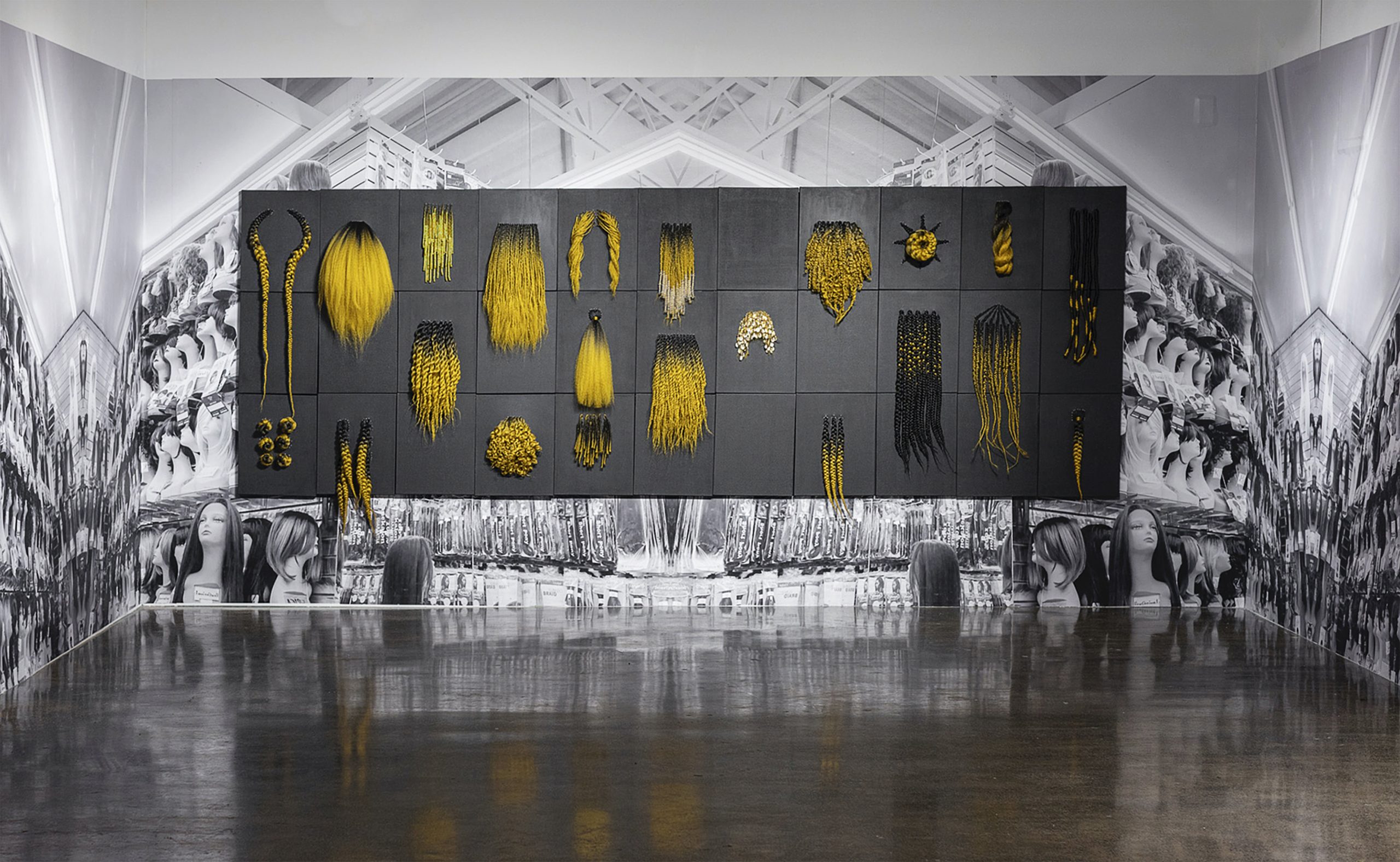
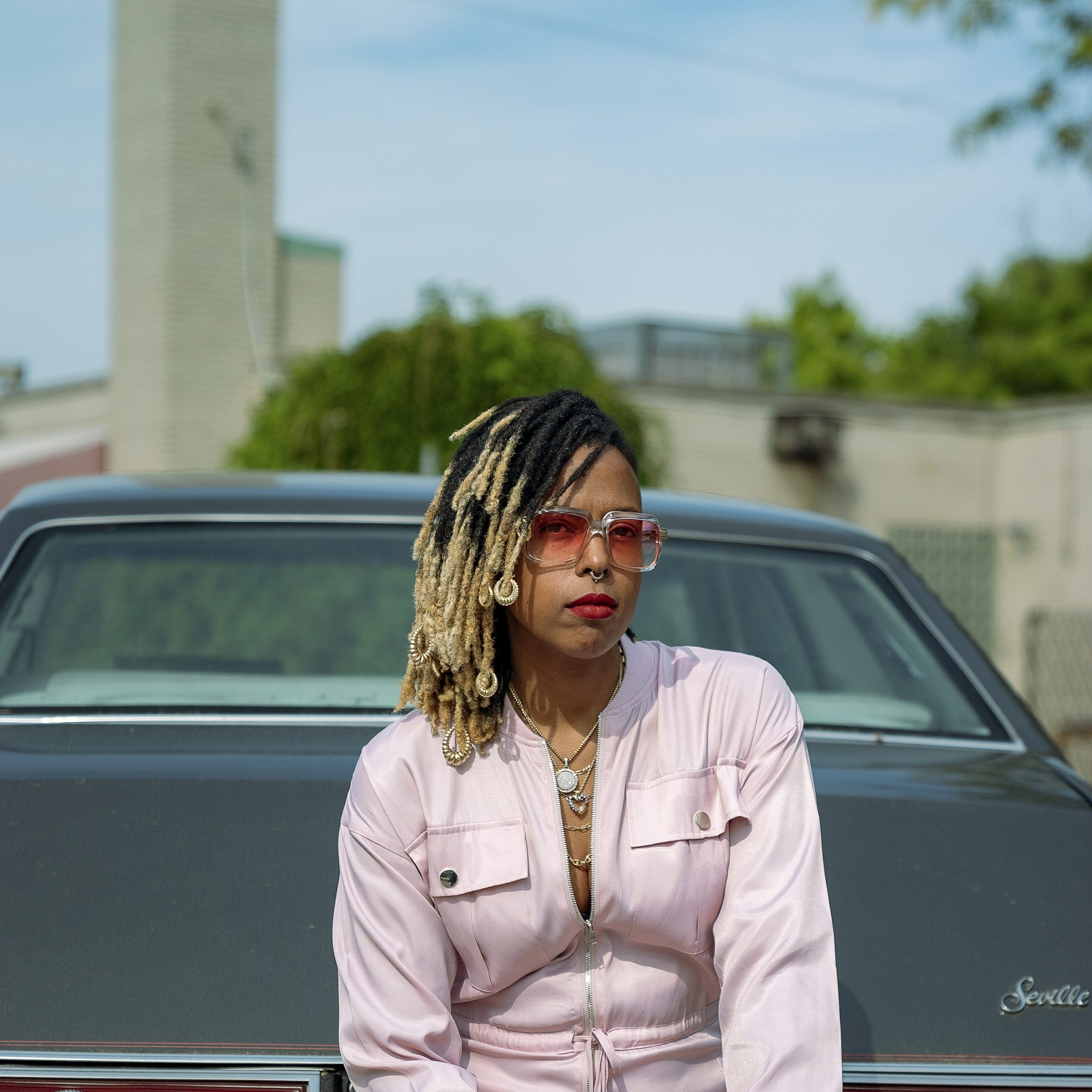
Image credits (from top):
Tiff Massey I got Bundles and I Got Flewed Out 2019
kanekalon, plastic beads, and cowry shells on canvas.
264.1 x 1252.2 cm
©Tiff Massey
Courtesy of the artist.
–
Portrait of Tiff Massey
Photo: Corey Johnson